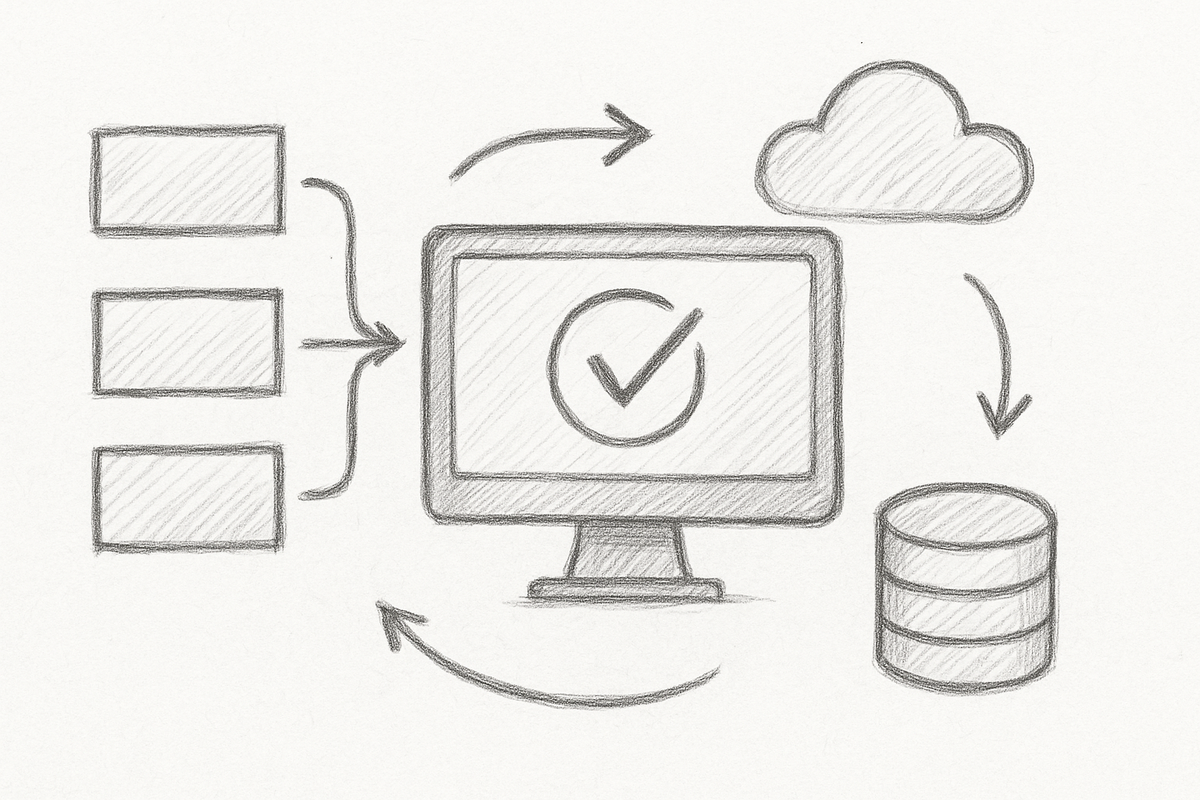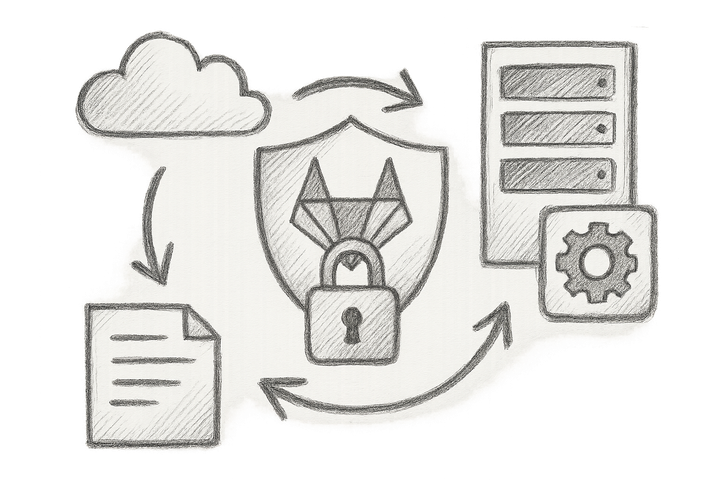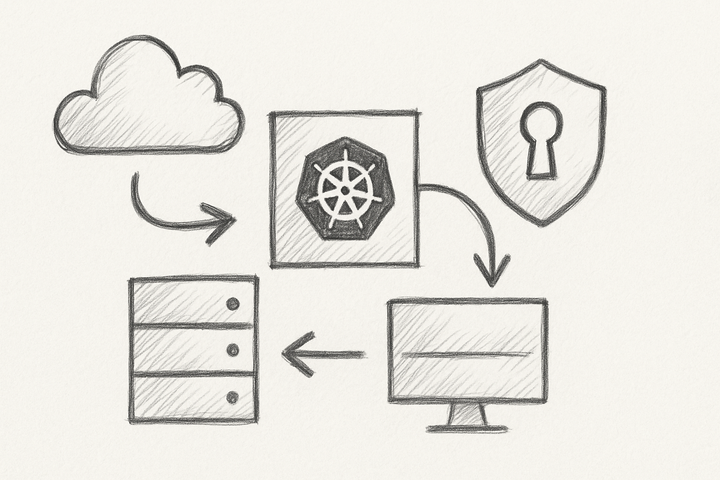Automating Compliance Audits in CI/CD Pipelines

At 2 AM on a Tuesday, my phone erupted in a symphony of alerts. I had just crawled into bed after a long day managing the latest deployment when I found myself staring at a rather disconcerting notification: our CI/CD pipeline had failed a compliance audit. My heart sank as I recalled the sleepless nights piecing together compliance standards, each with its unique demands, while racing against continuous integration cycles. If I didn’t act quickly, our deployment would roll back, and I’d be tangled in a web of manual audits that promised to waste precious engineering hours—and possibly expose us to regulatory penalties.
The Compliance Conundrum
In the bustling world of DevOps, compliance isn't merely another box to tick; it's an integral component of our ecosystem. As I sat there, grappling with the urge to panic, I realised the necessity of establishing a reliable framework that automatically validates compliance as part of our CI/CD processes. Manual compliance auditing can easily become a bottleneck, draining resources and inviting human error into the mix. The irony? We were deploying changes at lightning speed while our compliance processes lagged behind like a rusty old engine.
Importance and Risks
Adhering to compliance standards such as GDPR and PCI-DSS is paramount, reflecting our duty to protect user data and maintain system integrity. A misstep in compliance can lead to hefty fines or, worse, the erosion of customer trust. The stakes were high, and the business impact loomed large—I learned that traditional methods of managing compliance simply wouldn't suffice if we wanted to thrive in this challenging landscape.
Understanding Compliance Requirements
Navigating compliance requirements can feel like deciphering a cryptic code. Different projects often come with distinct compliance obligations. Here's a quick guide to some key standards:
- GDPR (General Data Protection Regulation): Relevant for any organisation handling EU citizens' data; it emphasises user consent and data protection.
- PCI-DSS (Payment Card Industry Data Security Standard): Essential for companies handling credit card transactions, mandating stringent data security practices.
Understanding these requirements is crucial, as failing to comply can complicate what should be simple tasks and cost significant time and resources in the long run.
The Case for Automation
Amidst the chaos, I discovered a game-changing revelation: automating compliance audits could markedly lighten our burdens. Here's why automation became a beacon of hope:
- Reduced Manual Effort: Automation minimised our reliance on manpower and the human errors that accompany it.
- Increased Audit Readiness: We could execute compliance checks at every stage of development, ensuring we were never caught off guard again.
- Enhanced Security Posture: Proactive compliance measures translate to stronger security.
I recollect a former colleague's success story, where implementing automated checks not only saved hundreds of hours but also kept the company aligned with regulatory expectations. For further insights on enhancing security through automation, refer to Regulatory Compliance and Risk Management Strategies and our article on Enhancing Security Posture with Automated Compliance in CI/CD.
Actionable Strategies for Automating Compliance Audits
Implementing Infrastructure as Code (IaC)
By adopting Infrastructure as Code, I could version control compliance rules and policies alongside application code, creating a single source of truth. Here’s a sample IaC snippet using Terraform:
resource "aws_s3_bucket" "compliant_bucket" {
bucket = "my-compliant-bucket"
# Compliance settings
versioning {
enabled = true
}
lifecycle_rule {
id = "log"
enabled = true
noncurrent_version_expiration {
days = 30
}
}
}
By defining compliance requirements in code, I ensured adherence while allowing for easy modifications as the compliance landscape evolves. For a deeper understanding of how infrastructure measurement supports compliance, refer to Optimizing Infrastructure Measurement with OpenTelemetry.
Using Open Policy Agent (OPA) for Policy Enforcement
Equipping myself with OPA enabled us to define policies as code, enforce them across our services, and automate compliance checks in real-time.
Integrating OPA into a CI/CD pipeline with Jenkins was seamless:
pipeline {
agent any
stages {
stage('Test Compliance') {
steps {
script {
def policyCheck = sh(script: "opa eval --data policy.rego --data input.json", returnStatus: true)
if (policyCheck != 0) {
error "Compliance check failed!"
}
}
}
}
}
}
This implementation saved me countless hours otherwise spent manually validating configurations. To explore this connection with broader security concerns, check insights on Optimizing Container Security with Dragonfly v2.3.0.
Integrating Compliance Checks in CI/CD
Whether employing Jenkins, GitHub Actions, or alternative CI platforms, seamless integration is paramount. Here's a GitHub Actions YAML snippet for incorporating compliance checks:
name: CI/CD Pipeline
on: [push]
jobs:
compliance:
runs-on: ubuntu-latest
steps:
- name: Check out code
uses: actions/checkout@v2
- name: Run compliance checks
run: |
docker run --rm my-compliance-check-image
Automating Testing with Checkov and tfsec
Adopting tools like Checkov and tfsec to automate infrastructure code scanning proved invaluable. Checkov effectively identifies misconfigurations in Terraform files:
checkov -f path/to/terraform/files
This quick command provided instant feedback, enabling rapid remediation of compliance issues right within pull requests—eliminating the wait for a staged audit. For strategies on load balancing that complement these efforts, explore Effective Database Load Balancing Strategies in Cloud Environments.
Building a Compliance Dashboard
Visualising compliance statuses has been instrumental to my success, enriching our workflows. A well-structured dashboard highlights metrics such as audit trails, violation counts, and remediation timelines. Using tools like Grafana, I could display compliance data trends, aligning our DevOps culture with transparent compliance monitoring.
Sample Dashboard Snippet
Imagine a visualisation where compliance statuses resemble a cityscape—units indicating compliance health are displayed as lit windows, while violations manifest as dark, unwelcoming gaps in the panorama.
Aha Moment: Proactive vs. Reactive Compliance
Switching to proactive compliance measures transformed our DevOps culture. Continuous integration became the backbone of our compliance routine, fostering an environment where teams felt empowered to uphold standards without sacrificing speed. Promoting ongoing education and awareness suffused our processes with confidence rather than fear.
Validation: Measuring Success and Continuous Improvement
Setting clear KPIs for compliance automation is vital. Tracking metrics such as time to remediation, frequency of compliance violations, and the percentage of automated checks provides insight into the effectiveness of our strategies. Continuous feedback loops ensured our processes evolved alongside the technology landscape.
Forward-Looking Innovation
Emerging technologies, especially AI and machine learning, hold immense promise in revolutionising compliance practices. Observing how these tools adapt to evolving regulations has me excited about their potential to alleviate stress on DevOps teams in the foreseeable future. For insights on leveraging AI tools in your workflows, check out Integrating AI Tools into Your DevOps Workflow.
Conclusion: Next Steps for Implementation
Reflecting upon my journey, the steps to integrate automated compliance audits into CI/CD pipelines became clear:
- Adopt IaC: Start incorporating compliance requirements directly into your configuration code.
- Deploy Tools: Integrate OPA, Checkov, or similar platforms within your CI/CD processes to promote compliance.
- Build Dashboards: Create clear visual representations of compliance statuses to foster transparency.
In these rapidly changing times, we must continue to learn and adapt. The journey towards compliance may be winding—but with these strategies, we can navigate it confidently and emerge victorious.

These lessons, birthed from experience and adaptation, will serve as our guide, ensuring that we not only survive but thrive amidst the regulatory pressures that may come our way.



